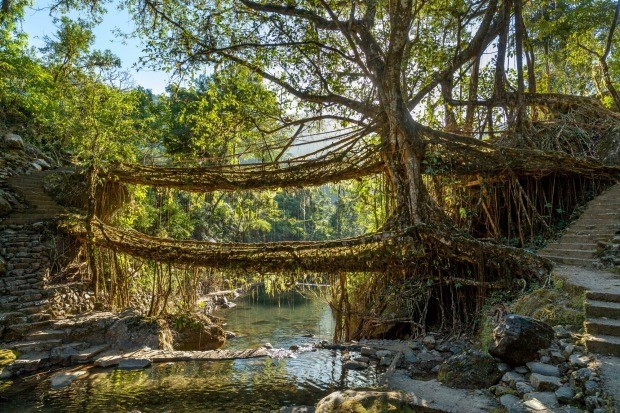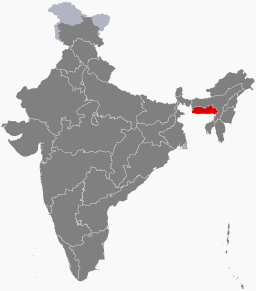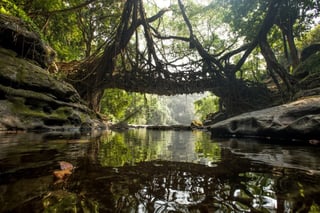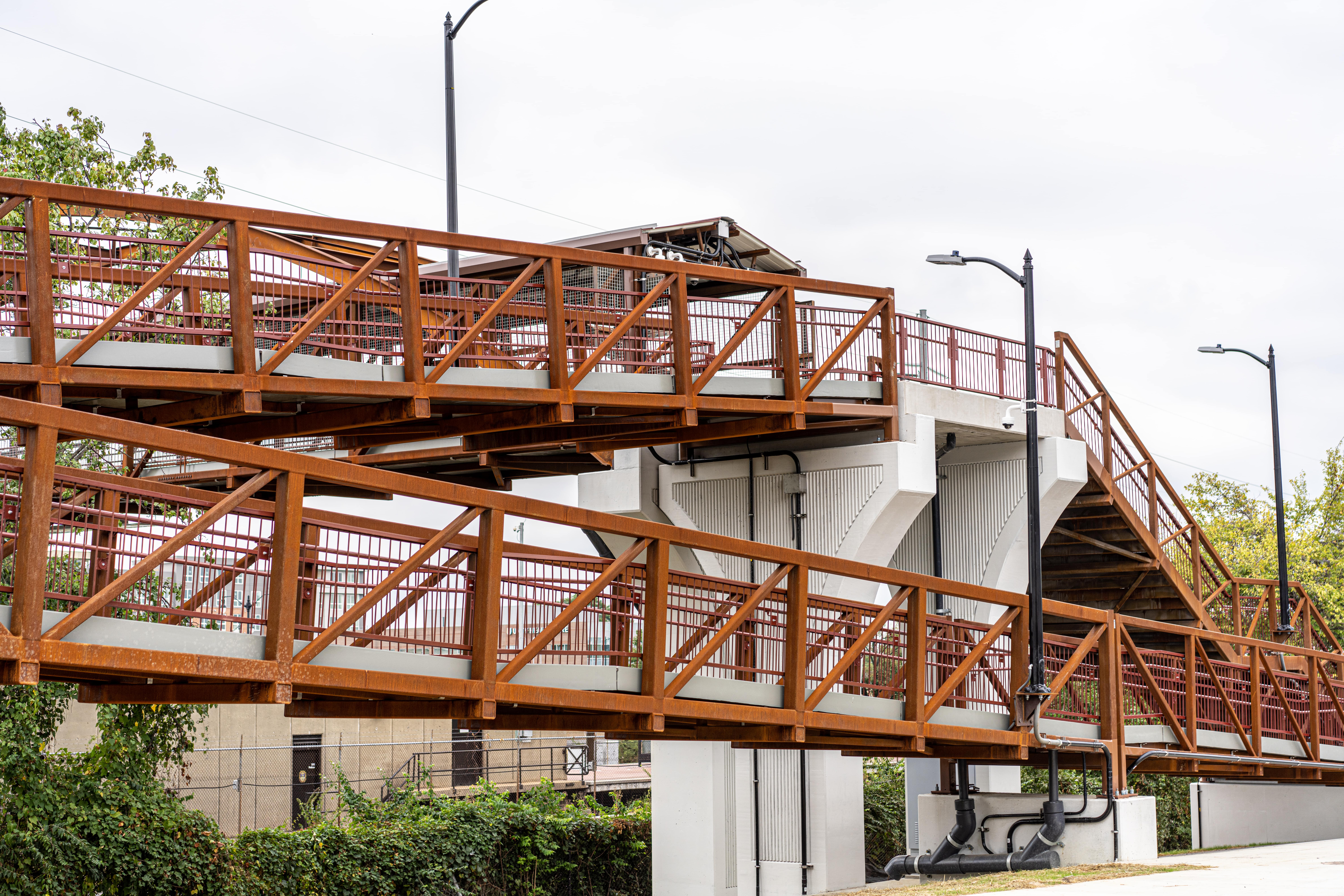
Map photo below by Filpro (http://creativecommons.org/licenses/by-sa/4.0), via Wikimedia Commons
Many of our recent blogs have highlighted some of the most architecturally creative and unique man-made pedestrian bridges in the world. Some bridges, however, aren't man-made - they're created by forces of nature. To see one of our favorites, let’s journey to one of the rainiest places on earth, Meghalaya, India.
 Meghalaya, a state in northeast India, is made up of the Khasi and Jaintia hills. 70% of the state is covered in subtropical forests, which yield about 470 inches of rain a year. The average annual rainfall in the Pacific Northwest, the most seen in the US, is only around 100 inches. The steadfast rain in this area of India leads to a great deal of forest and plant growth. Long ago, the War-Khasis tribe of Meghalaya realized they could use the rain-driven growth to their advantage - to “grow” trees into vital river crossings. This technique is a tradition that continues to be used today.
Meghalaya, a state in northeast India, is made up of the Khasi and Jaintia hills. 70% of the state is covered in subtropical forests, which yield about 470 inches of rain a year. The average annual rainfall in the Pacific Northwest, the most seen in the US, is only around 100 inches. The steadfast rain in this area of India leads to a great deal of forest and plant growth. Long ago, the War-Khasis tribe of Meghalaya realized they could use the rain-driven growth to their advantage - to “grow” trees into vital river crossings. This technique is a tradition that continues to be used today.
The Ficus elastic, also known as the rubber tree, is the particular species chosen to grow into bridges. This tree  produces secondary roots high on its trunk. These roots can be “trained” to grow in a particular direction by slicing down the middle and hollowing out betel nut trunks. These trunks create a guidance system for the roots of the rubber tree, which grow straight out and eventually take root in the soil on the opposite side of the river.
produces secondary roots high on its trunk. These roots can be “trained” to grow in a particular direction by slicing down the middle and hollowing out betel nut trunks. These trunks create a guidance system for the roots of the rubber tree, which grow straight out and eventually take root in the soil on the opposite side of the river.
It usually takes about 10-15 years for a root bridge to fully develop. This may seem like a long time, but the final product is a very strong pedestrian root bridge that can hold over fifty people at a time.
And instead of wearing out or weakening over time, root bridges get stronger as they get older. It's no surprise then that the locals actually prefer these root bridges over steel bridges, even though some of Meghalaya's current root bridges may be over 500 years old. The most famous root bridge is the “Umshiang Double-Decker Root Bridge” which is actually two bridges grown from the same tree roots.

